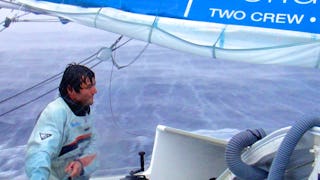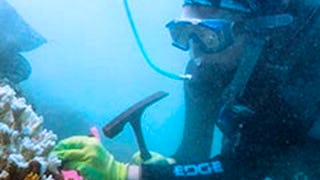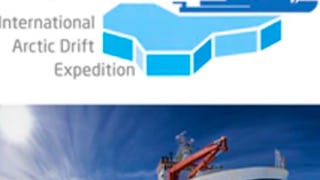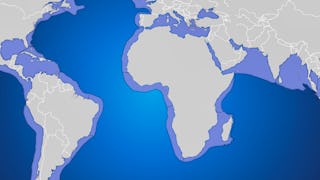The course for a round the world regatta leads the boats through the Mediterranean Sea and the Atlantic, Southern Indian and South Pacific Oceans. On their voyage, the skippers come across a large variety of oceanographic situations: strong currents, floating ice, wave formations of every kind and biological diversity.


Gain next-level skills with Coursera Plus for $199 (regularly $399). Save now.


Oceanography: a key to better understand our world

Instructor: Jordi Serra
32,140 already enrolled
Included with
(286 reviews)
Skills you'll gain
Details to know

Add to your LinkedIn profile
7 assignments
See how employees at top companies are mastering in-demand skills

There are 7 modules in this course
Module 1 addresses some of the fundamental concepts of descriptive oceanography related to the physical characteristics of water: the vertical distribution of temperature and salinity, TS diagram, stability and destabilization of the water column, the formation of water dense and deep, the water masses and circulation. It is necessary also introduces concepts to understand the relationship between the distribution of the mass of water, its surface topography of a regional or larger scale, and called geostrophic circulation, where it plays a fundamental role the Coriolis force. While the concepts presented have general applicability, examples are the Mediterranean, starting with the characteristics of the waters near Barcelona, where it begins and ends the Barcelona World Race, and ending with the general circulation of the water masses around the Mediterranean.
What's included
5 videos13 readings1 assignment
In this module you will learn how dense waters and water bodies are formed. Where the Mediterranean will be used as a model of ocean. As well as some of the fundamental concepts of marine dynamics, which is how the Coriolis and pressure gradient force is formed. Besides the importance of dynamic topography and geostrophic flow. Hope will be to your liking.
What's included
4 videos8 readings1 assignment
This module will enter fully into the Global Ocean, will review and generalize the aspects previously referred to in the previous module. We will see the role of the ocean on a global scale, and how we can affect those who live closer or farther from the coast. Try to understand why it is still quite unknown and will glance nose in the marine environment. That is, how it behaves for those living beings, most who live within the ocean or in direct contact with him.
What's included
12 videos18 readings1 assignment
In this module you will learn the importance of ocean observation by satellite, talk about remote sensing, electromagnetic radiation emitted and reflected, and the importance of their study for navigation.
What's included
4 videos9 readings1 assignment
This new module will expand the study of oceanography satellite, and microwave as for obtaining information are used. What are they and what is the importance of active sensors. And finally, other applications of satellites and their importance.
What's included
8 videos15 readings1 assignment
In this section you will learn ocean chemistry what is it? how does it work? What is the vertical axis of the biosphere and the vertical segregació of the elements and how it works? What is carbon carbonate system and what is its relationship with the ocean conveyor belt?. The answers to all these questions will help us understand how the oceans work, the importance for navigation and its relationship to the planet's climate.
What's included
5 videos19 readings1 assignment
The result of the evolution of the crust of the Earth: a set of land masses and ocean basins in continuous motion over crust. With a little history we will achieve understand the result of the evolution of the crust of the earth and the diversity of ocean domains: the continental margins to large tanks. Large ocean basins
What's included
11 videos15 readings1 assignment
Instructor

Explore more from Environmental Science and Sustainability
 Status: Preview
Status: PreviewUniversitat de Barcelona
 Status: Preview
Status: PreviewAmerican Museum of Natural History
 Status: Preview
Status: PreviewUniversity of Colorado Boulder
 Status: Preview
Status: PreviewUniversity of Cape Town
Why people choose Coursera for their career




Learner reviews
286 reviews
- 5 stars
69.93%
- 4 stars
19.23%
- 3 stars
4.54%
- 2 stars
2.79%
- 1 star
3.49%
Showing 3 of 286
Reviewed on Aug 21, 2023
It was a resourceful and research based course. Thanks Dr. Jordi Serra and Coursera.
Reviewed on Jan 1, 2018
I enjoyed the learning process for this course. I definitely recommend it. This course is very interactive and quite interesting :)
Reviewed on Feb 21, 2024
Excelente curso! Cada video es de fácil entendimiento y el texto complementa mucho cada información dada.
Frequently asked questions
To access the course materials, assignments and to earn a Certificate, you will need to purchase the Certificate experience when you enroll in a course. You can try a Free Trial instead, or apply for Financial Aid. The course may offer 'Full Course, No Certificate' instead. This option lets you see all course materials, submit required assessments, and get a final grade. This also means that you will not be able to purchase a Certificate experience.
When you purchase a Certificate you get access to all course materials, including graded assignments. Upon completing the course, your electronic Certificate will be added to your Accomplishments page - from there, you can print your Certificate or add it to your LinkedIn profile.
Yes. In select learning programs, you can apply for financial aid or a scholarship if you can’t afford the enrollment fee. If fin aid or scholarship is available for your learning program selection, you’ll find a link to apply on the description page.
More questions
Financial aid available,







